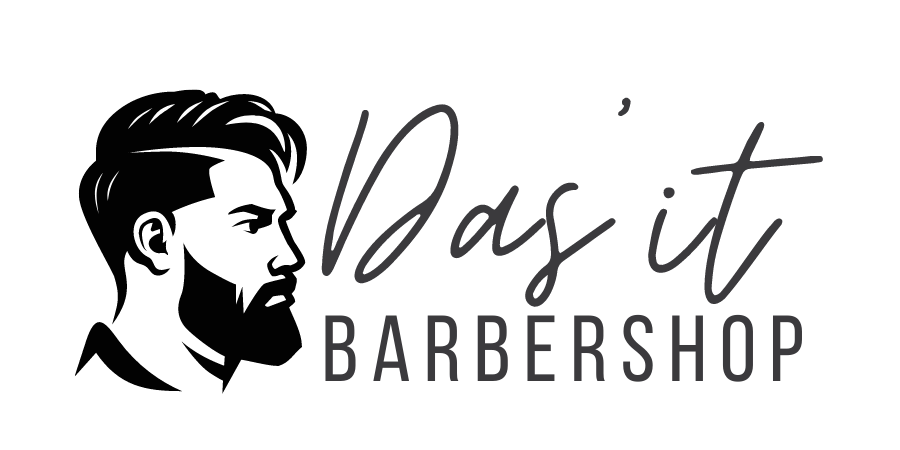Choosing the right hairstyle for your child can be both exciting and challenging. A great hairstyle not only boosts your child’s confidence but also reflects their unique personality. This listicle provides 11 valuable tips to help you select creative kids’ hairstyles that are stylish, practical, and fun. By the end of this read, you’ll have a range of ideas to ensure your little one looks their best, whether they’re heading to school or a special event.
1. Consider the Child’s Age and Hair Type
When selecting a hairstyle, it’s crucial to take your child’s age and hair type into account. For younger children, simplicity is key; they may benefit from low-maintenance styles that don’t require frequent upkeep, such as a classic bob or a simple layered cut. These looks are not only easier for parents to manage but also allow the child to play freely without worrying about their hair. As children grow older, they may express a desire for more intricate hairstyles, such as braids or styled cuts, which can also showcase their individual flair.
Furthermore, understanding your child’s hair type plays a vital role in making the right choice. For instance, curly hair may lend itself well to styles that embrace volume and shape, like curly pigtails or a voluminous afro, while straight hair might be suited for sleek ponytails or stylish cuts. If your child has thick hair, consider styles that can help manage the volume, such as layered cuts or a side-swept look. On the other hand, fine hair may benefit from styles that add texture, such as a textured pixie or gentle waves. By considering these factors, you can ensure that the hairstyle you choose not only looks amazing but is also practical and suited to your child’s lifestyle.
2. Look for Inspiration from Popular Kids’ Hairstyles
Staying updated with current trends is a great way to find fresh ideas for your child’s hairstyle. Popular kids’ hairstyles often reflect a mix of practicality and flair, allowing children to express their personalities while remaining manageable for parents. Exploring resources such as magazines, social media platforms, and even the hairstyles of celebrity kids can spark creativity and provide valuable insights into what’s trending.
For instance, sleek bob cuts have become increasingly popular due to their clean lines and versatility. They can be styled straight for a polished look or waved for a more playful vibe. Playful pixie cuts are another fantastic option, offering a fun and carefree aesthetic that’s perfect for active children. These styles not only celebrate individuality but also require minimal upkeep, making them an ideal choice for busy families.
Additionally, cool undercuts are making waves, particularly among older kids who want a sophisticated yet edgy look. This style involves shaving or trimming the sides of the head while leaving longer hair on top, allowing for various styling options ranging from slicked-back to tousled. By researching and collecting inspiration from these sources, you can find the perfect hairstyle that both reflects your child’s character and meets the practical needs of their day-to-day life.
3. Choose a Style that Complements the Child’s Face Shape
Just like adults, children have unique face shapes that can be enhanced by choosing the right hairstyle. Understanding the different face shapes—such as round, oval, square, or heart-shaped—can aid in selecting a hairstyle that highlights a child’s natural beauty. For instance, children with round faces may benefit from hairstyles that add height on top, such as textured layers or voluminous bobs, which can elongate their appearance and create a balanced look.
Conversely, kids with angular or square faces might find that softer, layered cuts help to soften sharp features and add dimension. Long, face-framing layers can be particularly flattering, as they create a gentle curve that balances the overall shape. For children with heart-shaped faces, styles that draw attention to the eyes and balance the forehead, such as side-swept bangs or chin-length bobs, can be a great choice.
Taking the time to identify your child’s face shape not only ensures that you choose a hairstyle that enhances their natural features, but it also helps instill confidence in your child as they embrace their unique look. Experimenting with various styles and consulting a hairstylist can also provide insight into what works best. Ultimately, a well-chosen hairstyle will not only reflect your child’s personality but also accentuate their individual beauty.
4. Practicality and Ease of Maintenance Should Be a Priority
While creative hairstyles are fun, practicality and ease of maintenance are crucial factors to consider when choosing a style for your child. A versatile and manageable hairstyle not only saves time during busy mornings but also allows children to engage in their daily activities without constant worry about their hair. For instance, if your child is active in sports or outdoor play, opting for a shorter, easy-to-manage style can be more suitable than a long, intricate one that requires frequent styling.
Consider styles that can be quickly brushed or tied back, such as low ponytails or braids, which can withstand the rigors of play while still looking polished. Additionally, hairstyles that require minimal products or styling tools are ideal for busy parents and active kids. It’s also worth exploring low-maintenance cuts like bobs or pixies that can retain their shape without too much upkeep. Ultimately, the goal is to find a balance between creativity and functionality, ensuring that your child’s hairstyle reflects their personality while being practical for their lifestyle. By prioritizing ease of maintenance, you empower your child to express themselves without the stress of constant hair care.
5. Incorporate the Child’s Preferences into the Decision-Making Process
Children, even at a young age, often possess their own distinct tastes and opinions regarding their appearance. It is essential to involve them in the decision-making process when selecting a hairstyle, as this fosters a sense of ownership and confidence in their personal style. Start by having an open conversation with your child about their preferences—ask them what they like and dislike about different styles, colors, or lengths. This engagement not only makes them feel valued but also strengthens the bond between parent and child.
Consider bringing in visual aids such as magazines, online galleries, or social media platforms that showcase various hairstyles. Encourage your child to point out the styles that appeal to them, as well as those they may not prefer. Pay attention to any themes that emerge, whether they lean towards playful, classic, or edgy styles. Additionally, it may be beneficial for New York barber to discuss the practicality of their choices, integrating elements from the previous section on ease of maintenance.
Ultimately, the goal is to ensure that your child’s hairstyle reflects their personality while making them feel comfortable and confident. By prioritizing their preferences in the process, you empower your child to express themselves authentically and contribute to their own self-image. This collaborative approach will not only lead to a hairstyle they love but also instil a greater sense of self-esteem and individuality.
6. Seasonal Considerations for Kids’ Hairstyles
When selecting a hairstyle for your child, it’s important to consider the impact of seasonal changes on hair behaviour and maintenance. In summer, the heat and humidity can create challenges such as frizz and discomfort, making shorter styles not only fashionable but practical. Cuts like pixies or bobs can keep hair off the neck and face, helping your child stay cool while still looking stylish. Additionally, lighter colours or highlights can reflect sunlight, adding a fun summer vibe.
As the seasons transition to autumn and winter, the colder temperatures often bring a need for protective styles that can shield hair from the harsh elements. Longer hairstyles, such as braids or buns, can protect against breakage caused by dry air and indoor heating. Using accessories like hats or headbands can add flair while also serving a functional purpose, keeping ears warm and hair secure.
Moreover, it’s essential to consider the type of activities your child engages in during different seasons. For example, if your family enjoys outdoor sports in warmer months, opting for practical and low-maintenance haircuts can simplify routines and reduce grooming time. Conversely, winter may allow for experimentation with more intricate styles since outdoor time can decrease due to colder weather.
Ultimately, understanding how different seasons affect hair texture, length, and styling can greatly enhance your child’s comfort and confidence. By incorporating seasonal considerations into your decision-making process, you not only create hairstyles that suit your child’s preferences but also address their needs for practicality and care based on the weather.
7. The Role of Accessories in Enhancing Creative Kids’ Hairstyles
Hair accessories can add an extra touch of creativity to any hairstyle, elevating an everyday look into something special. Colorful headbands, clips, and decorative pins can transform simple styles, making them more elaborate and eye-catching. Ribbons and bows in various patterns and hues can introduce a playful element, while hats can provide both style and protection from the sun. Accessories are not only a fun way to express individuality but also offer versatility, allowing for quick changes to a child’s look without any permanent alterations. They can easily be swapped out for different outings or activities, providing endless opportunities for self-expression. Moreover, incorporating themed accessories for holidays or events can further enhance creativity and joy in hairstyling.
8. Professional Advice from a New York Barbershop
For optimal results, seeking professional advice is invaluable when it comes to kids’ hairstyles. A skilled barber or stylist at a reputable New York Barbershop can provide personalized recommendations tailored to your child’s specific hair type, texture, and styling preferences. They possess the expertise to execute complex styles that may be challenging to replicate at home, ensuring a polished and professional look. Additionally, a professional consultation can help parents navigate the vast array of trending styles and assist in choosing one that suits both the child’s personality and lifestyle. With the right guidance, parents can feel confident that their children will not only look stylish but also wear hairstyles that are manageable and suitable for their daily activities.
9. Experiment with Colors and Highlights for a Fun Look
Incorporating colors and highlights into your child’s hair can introduce a playful and vibrant element to their overall appearance that easily bring hair transformation. Temporary hair colours and washable hair chalks are excellent choices for kids, as they are designed to be safe and non-damaging. These products offer the freedom to experiment without the commitment of permanent dye, allowing children to enjoy new colours that align with their moods or special occasions. Bright hues like pastel pinks, blues, or even bold reds can be applied for a fun day at a party or a festive event. Moreover, as these products are easy to wash out, your child can change their look frequently, exploring various styles while expressing their creativity.
10. Encouraging Individuality and Self-Expression Through Hairstyles
A hairstyle can serve as a powerful tool for self-expression, encouraging children to showcase their unique personalities and interests. Parents should foster an environment where their children feel comfortable selecting hairstyles that resonate with them, whether that manifests as a quirky cut, a bold colour, or the addition of distinctive accessories. By involving children in the decision-making process, they can feel a sense of ownership over their appearance, which can significantly boost their confidence. This encouragement not only nurtures their individuality but also empowers them to communicate their identity through their hairstyles, allowing for a vibrant expression of who they are. Embracing their unique choices can lead to increased self-esteem and a deeper appreciation for their own distinctive style.
11. Maintenance Tips for Keeping a Creative Kids’ Hairstyle Fresh
Once you’ve chosen the perfect hairstyle for your child, maintenance is key to keeping it looking fresh and vibrant. Regular trims are essential; they not only maintain the shape of the hairstyle but also prevent split ends, which can lead to an overall unhealthy appearance. Aim for trims every 6-8 weeks, depending on the growth rate of your child’s hair and the complexity of the style.
Proper washing is another crucial aspect of maintenance. Use a gentle, sulfate-free shampoo that is suitable for children’s hair, ensuring that it’s effective yet gentle enough not to strip away essential oils. How often you wash will depend on their activity level — active kids may require more frequent washes to keep their hair clean and fresh, while those with drier hair types might benefit from washing less frequently.
Conditioning is vital, particularly for hairstyles involving colour treatments or styling products. A good conditioner can help keep hair nourished, manageable, and free from tangles. Consider using a leave-in conditioner for added moisture, especially if the hair tends to be dry or frizzy. Additionally, for more elaborate styles, always follow any specific care instructions provided by your stylist, as some styles may require special products or techniques to ensure longevity.
Lastly, encourage your child to take care of their hair at home as part of their routine. Simple practices such as using a wide-toothed comb to detangle damp hair, avoiding excessive heat styling, and wearing a protective hairstyle during play can make a huge difference in maintaining the look and health of their creative hairstyle.
Final Thoughts
A great hairstyle can have a significant impact on your child’s self-esteem and confidence. It’s a form of self-expression and can make them feel special and unique. By considering these tips and focusing on your child’s needs and preferences, you can choose a hairstyle that they will love and feel proud of.


